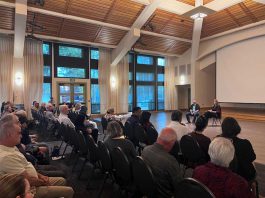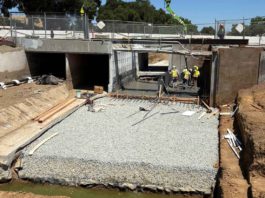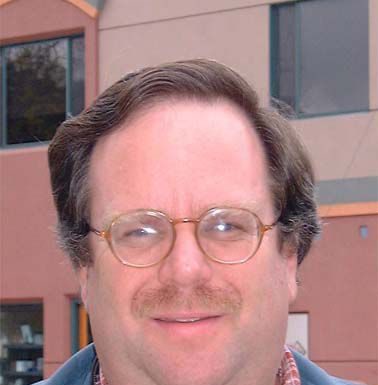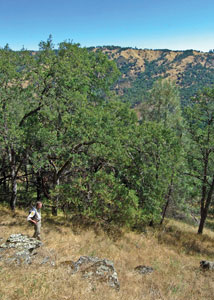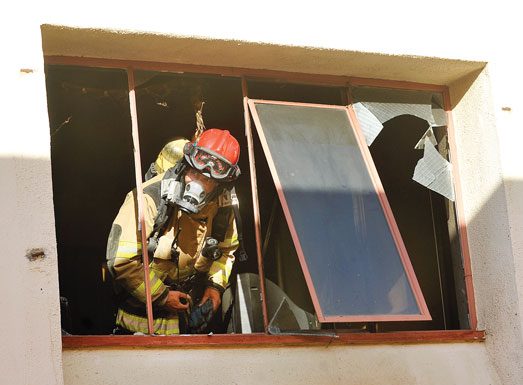Guest view: MHDA offers pedestrian safety suggestions
The Morgan Hill Downtown Association Board of Directors joins the entire community in the sorrow surrounding the tragic accident on the evening of July 4. While crossing Monterey Road, two young boys were struck by a car and critically injured at an intersection widely known to be one of the riskiest in the downtown.On a night when most of the community was celebrating our nation’s birth, those two young members of our community ended their day in a most horrific way that undoubtedly forever changed their lives, as well as the driver’s and both of their families.As historically safe as our downtown has been, the hard-earned growth in popularity of our businesses may challenge the past record. As the efforts of everyone—from the stalwart businesses of the community, to developers, to city staff—continue to contribute to the success of the downtown, we will see a growing competition for the use of our sidewalks, crosswalks and roadways.We still don’t yet know the details surrounding the July 4 accident. We don’t know if any of the traffic calming efforts like those currently proposed or seen during last year’s Complete Streets Pilot Project would have helped. We have to hope that we have the best possible solution to our traffic calming concerns amongst our current plans or options being explored, but we need to keep an open mind to additional solutions.The recent tragic accident has served as a reminder that we need to maintain a safe environment downtown, but at the same time we want to remind the community that the downtown is a business district that will continue to grow in its role as the community social gathering place and economic driver.Keeping this in mind, we would like to restate some of our previous recommendations that have not yet been implemented:• Install the traffic control signal at Fourth Street and Monterey Road as quickly as possible;• Provide enhanced law enforcement in a manner sensitive to the perception that excessive enforcement may be a deterrent to bringing more visitors to the downtown;• Identify ways to lower and implement a 15 mph speed limit through the downtown core;• Provide user-held crosswalk flags at pedestrian crossings as soon as possible;• Close Monterey Road to vehicle traffic on selected weekends, or on weekends in general.We do not support the following in the downtown core:• Speed cushions or speed bumps;• Raised pavement markers;• Flashing pedestrian crossing lights;• Vehicle speed indication signage.The recently proposed traffic calming strategy of programming the downtown traffic control signals to flash red in all directions (creating four-way stop sign intersections) during off-peak traffic periods should be further considered for implementation.Recent comments by City Council members have indicated an interest in revisiting the lane reduction, as experienced during the 2015 Complete Streets Pilot Project, when the Hale Avenue extension is completed or conditions present a better opportunity for successful implementation. Please consider a resolution stating that under the se conditions that Monterey Road lad reductions could be revisited.Kathleen Sullivan is a board member of the Morgan Hill Downtown Association. She wrote this letter to the City Council on behalf of the MHDA board, and presented it to the council at the July 27 meeting.
Mike Roorda: Not running for re-election as City Treasurer
Thank you Morgan HillI would like to thank the citizens of Morgan Hill for entrusting me with the elected position of City Treasurer over the past 19 years (five elections).It has been a unique opportunity for me to serve the community while having professional experiences that were outside of my private sector employment and for me to meet many of you, plus elected officials and city staff, whom I may not have otherwise met.I have decided not to seek elected office this year but look forward to the spirited campaign I believe will ensue as others in the community seek this elected office.Thank you again.Michael J Roorda, City Treasurer City of Morgan Hill
Guest view: July is UV awareness month
California has some of the most beautiful weather in the country, but those beautiful sunny days can expose us to harmful side effects if we aren’t prepared.Ultraviolet (UV) radiation is the main cause of skin cancer in children and adults, and is the most common cancer in California and the nation. Tanning beds and some welding equipment are also known to cause skin cancer. Approximately 128,000 Californians will get skin cancer this year and one out of every five people in California will get skin cancer in his or her lifetime. The federal government has classified UV rays as a known human carcinogen because of their extreme likelihood of causing skin cancer.UV rays can be harmful to both adults and children, but children are particularly sensitive, especially before age ten. Children’s risk of developing skin cancer later in life is increased if they get sunburns and/or tan.The good news is that skin cancer caused by UV radiation can be prevented. The California Department of Public Health suggests that to prevent skin cancer you should decrease the time you spent outside from 10 a.m. to 4 p.m., wear full-length clothing and a hat with a wide brim and neck flaps, wear UV-protective sunglasses, seek shade, apply sunscreen SPF 30 or higher to exposed skin, use lip balm SPF 30 or higher and avoid tanning beds.Additionally, people should be aware that cancer-causing UV rays are the strongest from 10 a.m. to 4 p.m., from mid-spring through mid-fall, at higher altitudes, concentrating an extra 6 percent per 1,000 feet gain in elevation and with a lack of thick cloud cover.You can find additional information about UV safety on the California Department of Public Health (CDPH) website: https://www.cdph.ca.gov. The website provides resources and tips on how to stay safe from cancer-causing UV radiation.The better prepared you are, the more likely you are to have a fun and safe summer, and I encourage everyone to take the steps necessary to become educated on this issue to protect yourself and your family. Monning represents the 17th Senate District, which includes all of San Luis Obispo and Santa Cruz counties, and portions of Monterey and Santa Clara counties.
Supe’s update: Get your pet microchipped
Anyone who has ever lost a pet knows how helpless it feels not to be able to locate their animal. Fortunately, it’s now easier than ever to prevent this from happening. Santa Clara County Animal Care and Control and VIP Pet Care are proud to sponsor a free registered microchip and free rabies vaccination clinic Sunday, July 17 at the County Animal Shelter, 12370 Murphy Ave., San Martin. Santa Clara County Animal Control Officers carry microchip scanners in their vehicles. When they pick up a stray animal, they scan it for a microchip. If the animal is wearing a license tag or has a registered microchip, the officers will return the pet to the owners if possible. For more information about this event, call VIP Pet Care at (800) 427-7973.Homelessness decreased 14 percent in just two years in our county,thanks to innovative programs and partnerships between government and local nonprofits. There is no question about it: Housing First works. The concept of Housing First has proven effective in our community; we know that by providing people with housing in conjunction with supportive services, they are significantly more likely to stay housed and off the streets. As recently reported in the press, a single homeless person often uses $67,000 in government services annually. Once housed, that number drops down to $24,000. The significant saving is due largely to homeless individuals relying on expensive emergency room services for basic health care. Once housed, this reliance drops dramatically. By focusing on housing for the homeless, we can save lives and taxpayer money.From July 4 to 10, the U.S. Women's Open—dubbed the Super Bowl of women's golf—will take place for the first time ever in Santa Clara County! The public can watch 156 of the world's greatest professional and amateur golfers compete for the sport's ultimate trophy. The 71st U.S. Women's Open, presented by the USGA and hosted at CordeValle, will draw thousands of visitors from around the world to our region. Kudos to all involved with bringing this event to our County.The county is partnering with Racing Hearts to place lifesaving heart defibrillators (AEDs) throughout the community. So far, 249 AEDs have been installed, each of which is supported by a 5-year program of supplies and service. This translated to protecting over 943,230 students and adults per year, at 185 sites! If you have a location in your area which is high risk that you feel would benefit from our county's matching grant program, Racing Hearts (Program Manager for the County) is available to answer questionsabout how to start work on bringing AEDs into your community. Contact them at (650) 308-4183 or email [email protected]'t forget to submit a photo for my 2016 Summer Photo Contest. Grab your camera and show us your favorite summertime images of landscape, farmers markets, parades, county parks, neighborhood BBQs, pets and other fun images of summer. The deadline is July 29. Simply email your photo (ONE per person please) to [email protected] along with your name, address, and where you took the photo.Santa Clara County Supervisor Mike Wasserman represents District 1, which includes South County, on the board of supervisors. He can be reached at (408) 299-5010 or [email protected].
Guest view: State budget prioritizes education
On June 15, the legislature passed a $122 billion budget for the 2016-17 fiscal year, building on six years of responsible state spending and fiscal management. The spending plan invests in public education focuses on significant issues such as poverty, housing and childcare; and continues to add reserves to the state’s rainy day fund.
Guest view: No reason to leave Morgan Hill for Fourth
Are you wondering how to spend the Fourth of July weekend? Why not stay in Morgan Hill, our “Home, Sweet, Home”? This is the theme of Morgan Hill Freedom Fest’s annual Fourth of July Celebration. Why not stay close to home and experience events which will rekindle your patriotism, make wonderful memories and honor this amazing country of ours? All events are free to the public.This year, our Parade Grand Marshal is none other than Eddie Bowers. This Live Oak High School graduate is a champion for veterans’ causes. Because of Eddie, Morgan Hill has its own Veterans Memorial Square located in downtown. Many of you gather there on both Veterans Day and Memorial Day as we remember those soldiers from Morgan Hill who have lost their lives serving this country.As Chairperson of the 28th annual Patriotic Sing, I would like to take this opportunity to invite members of our community, families and friends to this year’s performance at 6 p.m. on Sunday, July 3, at the Morgan Hill Amphitheater. Angeline Madriaga will sing the National Anthem.The event will feature children of our community singing songs of our country, essay contest awards and a chance to celebrate America’s birthday.Special guests include the South Bay Chapter of the Blue Star Moms. Our soloist, Catherine Connor, will be singing “I’ll Be Seeing You,” honoring past Mayor Dennis Kennedy and William Brown—two men who worked tirelessly to make Morgan Hill what it has become today and who passed away this year.We extend a special invitation to those who have served or continue to serve in our armed forces. Please consider wearing your service uniform.Following the sing, walk over to the Family Street Dance.Then, on Monday, start your Fourth of July off by watching or even participating in the Freedom Fest 1 Mile Walk or 5K Walk/Run.Later, grab a seat along the Parade route for the Car Cruise ‘n Show, beginning at 9:30 a.m.Then just stay where you are: you’ll be ready to cheer as bands, floats and equestrians pass by in our annual Parade at 10 a.m.One event remains: the Freedom Fest Fireworks with a Splash at the Morgan Hill Outdoor Sports Center, on Condit Road between Tennant and San Pedro avenues. Entertainment begins at 6 p.m., with fireworks at dusk.As I mentioned in my opening paragraph, Fourth of July in Morgan Hill is an example of what makes this community our “Home, Sweet, Home.”Karen Ann Crane is Chair of the 2016 Freedom Fest Patriotic Sing and Essay Contest.
Guest view: Local clergy respond to Orlando violence
Justice, reason and respect demand that we respond to the horrific events that happened in Orlando, Fla. during the early morning hours of June 12, 2016.Nearly 50 people have been killed and even more injured in a senseless mass shooting. The target of these vicious attacks are our sisters and brothers within the LGBTQ community—a community which is often threatened, condemned and marginalized.Our hearts go out to the people of Orlando who identify themselves as being a welcoming community to the world.The Interfaith Clergy of Morgan Hill and Gilroy stand in solidarity with those who suffer and with the families of those who lost loved ones within the LGBTQ community; and we call on all people of faith to work alongside those of us within the Interfaith Clergy of Morgan Hill and Gilroy to do all in our power to continue fostering understanding, acceptance, healing and respect.We urge all people of faith to reexamine their understanding and attitude toward LGBTQ people, insuring that their teachings and practices do not endanger the lives of real people.The time has come once again to end the prejudice, fear and hateful rhetoric that often occur when speaking about people within the LGBTQ community.We call upon political leaders and governmental officials not to reduce this tragedy to political opportunism, but to take real action toward the abatement of weapons that threaten the health, safety and well-being of all people. We caution everyone about labeling religious people, especially our Muslim sisters and brothers, immigrants and other minorities with names and slogans that enable unscrupulous people to react with hatred, scorn, fear and violence.For now we mourn and pray alongside those who were injured, for those still missing, and for all those grieving the loss of their loved ones, that this violence ends.Together we must work for what is right and just that peace may prevail on earth.Signed by Clergy representing the Interfaith Clergy Association of South Valley:Imam IIyas Anwar, South Valley Islamic Community, San MartinFr. Tom Bonacci, Executive Director, Interfaith Peace Project, AntiochThe Rev. Dawn E. Boyd, Pastor, The United Methodist Church of Gilroy, CAThe Rev. Philip R. Cooke, Rector, St. John the Divine Episcopal Church, Morgan HillThe Rev. Patrick E. Davis, Pastor, Morgan Hill United Methodist Church, Morgan HillRabbi Debbie Israel, Congregation Emeth, Morgan HillThe Rev. BJ King, Associate Minister, Gavilan Hills Unity Church, GilroyThe Rev. Ron Koch, Pastor, Good Shepherd Lutheran Church, GilroyJim Rawlings, Church of Jesus Christ of Latter Day Saints, Del Rey Park Ward, GilroyRev. Jose Antonio Rubio, St. Mary Catholic Church, GilroyThe Rev. Bill Wilson, Senior Minister, Gavilan Hills Unity Church, GilroyThe Rev. Lee Tyler, Advent Lutheran Church, Morgan HillThe Rev. Karen Perkins, Advent Lutheran Church, Morgan Hill
Guest view: Aiello to be honored for Excellence
Reservations for the July 16 Leadership Excellence Award Dinner celebrating farmer, community supporter, philanthropist and good guy Joe Aiello are available. Please go to leadershipmorganhill.org to reserve your seats now.More than 200 community leaders, supporters of Leadership Morgan Hill (LMH) and friends of the honoree are expected to attend this community celebration to honor Joe and his family and to benefit the local nonprofit LMH educational organization.This year’s event will be held at Guglielmo Winery, a beautiful, tranquil outdoor venue set in the winery’s vineyards at 1460 East Main Ave., Morgan Hill—just a short distance from where Joe started his farming career.The theme for this year’s event is “Italian Farm to Table,” embracing our honoree’s heritage and his vocation. The menu reflects the theme, and delicious Italian-oriented food will be freshly delivered from farm to table for your enjoyment.Dinner is only part of the evening’s program. You’ll want to browse the silent auction before and during dinner; it will have unique and enticing items. After dinner we will celebrate Joe and his family in a brief award program, which will be followed by music featuring the local band Bad Monkey and dancing. Joe wants all attendees to come and have fun doing whatever makes it a memorable event for them. In keeping with the outdoor setting, dress for the event is casual, upscale summer fun.Aiello is an icon in the agricultural community. His Uesugi Farms is a very well-known producer of many crops including peppers, melons and strawberries. Their Pumpkin Patch in Morgan Hill is extremely popular, especially right around Halloween. Joe’s support of the Future Farmers of America programs in all our local high schools is extensive and truly inspires participants to put farming in their future. Some who do that also reap the award of a Uesugi- sponsored scholarship due to Joe and the family’s philanthropy.Joe is a leader who truly reflects the ideals of the LMH organization. Please come help us celebrate with this great guy and his family.Reservations and more information are available at leadershipmorganhill.org.Tate is the mayor of the City of Morgan Hill.
GUEST VIEW: A graduation lesson
When I first entered high school four years ago, I thought I would drop out. I thought high school would be like it is in the movies: everyone fooling around, learning things that you would never need in life, hanging out with friends and going to class when you wanted, IF you wanted.High school was not what I thought it would be. My first two years were not my best, due to my actions of ditching, drinking, not caring for me or my peers’ education.We were on a road to dropping out.Midway into my sophomore year, I woke up and realized that to get where I wanted to be I needed to be present and trying to succeed in class. Slowly, what I began to understand is that we all need to be present—not just physically, but also mentally in a classroom. Why? A classroom is where we are all connected and can make a better future for us and our family. We help each other out, we have our amazing teachers to help us in any situation we have.Coming to Central High is a blessing. It gives us a second opportunity for our education, and our teachers here are our family. They care for us not just in education but outside of school as well.I also began to understand that we all need to be present in life. We need to be willing to go into tough situations where we do not know everything, and be willing to accept the challenge to fight through and be OK with being uncomfortable.You do not have to be perfect in life to succeed. A close friend, a brother figure once said, “Success isn't measured by the position that one has reached in life, but by the obstacles they have overcome while trying to succeed.”I owe the biggest thank you and appreciation to some key adults who helped me realize I needed my education: Saul Gonzalez, Veronica Diaz and Dori Ann Prado as well my mother, all of whom help me change and grow. They never gave up on me. I'm thankful for my teachers Mr. Lines & Ms. Charlebois for teaching me about Economics and Civics. I thought these subjects would not be a part of my life. I’m glad I got my education from them because now I know how to fill in my taxes and make a resume, and I know about politics and my rights as a citizen. I learned to speak my mind and make my ideas count by giving sound reasons for my thoughts, by defending my position and standing up for what I believe.Having skills like this has prepared me for college as well as for life and for my future. I am the first one in my family to graduate from high school. I will be the first one in my family to go to college. And I will be the first one to GRADUATE from college!High school was not what I thought it would be. High school is where I woke up and realized I need my education.So to all my fellow class members, remember education is the key to everything and may God be with you through the years no matter where life takes you.WE DID IT, SI SE PUEDE!Jerry Juarez, Class of 2016, delivered the commencement speech at Central High School’s June 2 graduation ceremony. This piece is a slightly edited version of his speech.


